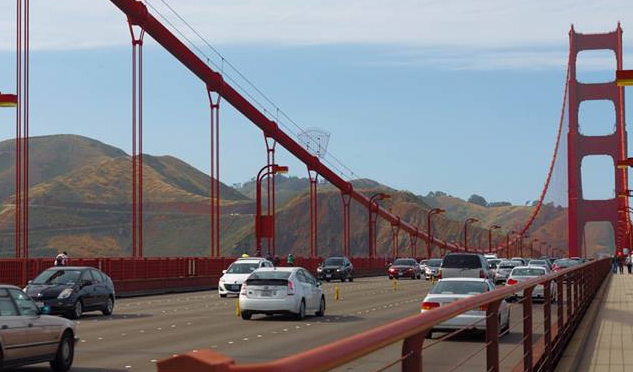Staff Editorial
Walk, run and pedal across the Golden Gate Bridge while it’s still free, because on Oct. 24, directors of the Golden Gate Bridge, Highway and Transportation District were in talks to charge pedestrians and bicyclists a small toll to cross the bridge. The talks later led to a 10-9 vote that ensures that the proposed toll stays on the district’s agenda, and also allows advocates both for and against the toll until 2017 to research its potential outcome and present their arguments.
This toll is one of the solutions proposed to begin eliminating the district’s 32.9 million dollar budget deficit within the next ten years. As of yet, no actual figure has been released to the public for the proposed toll. From 1937 to 1970, a 10-cent toll was implemented, but the district’s board of directors eventually voted to suspended it. The San Francisco Chronicle reported that during these years, people may have been jumping the turnstiles, making the toll difficult to enforce.
It is estimated that 6,000 bicyclists and 10,000 pedestrians cross the bridge daily, and in a city that has a reputation for being one of the most environmentally-conscious in the country, we believe a toll will do no favors for its eco-friendly image. Implementing a toll might discourage green alternatives for transportation, and increase CO2 emissions and car traffic. Those in favor of the toll claim that the money made will help with the bridge’s upkeep, but they are ignoring the fact that it is cars — not people — who contribute to the wear and tear of the bridge.
“You’ll notice that almost all of the SF reps voted against this and almost all the Marin reps voted for it,” said Morgan Fitzgibbons, an adjunct professor of environmental studies at USF and a member of the Bicycle Advisory and Pedestrian Safety Advisory Committees on the Board of Supervisors. “This is an attempt by North Bay powers to curb the number of cyclists bringing money to their county because they don’t want to move away from the car centric infrastructure and lifestyle that is dominant.”
If in fact this issue is more focused on the actual numbers than an environmental argument, a detail that should not be overlooked in regards to the deficit is what the district is currently spending its money on. Earlier this year, the board of directors approved funding for a 76 million dollar installation of steel-cable nets 20 feet beneath the bridge, meant as a suicide barrier. Since construction was completed on the bridge in 1937, it is estimated that about 1,600 people have jumped to their deaths. Although measures should be taken to try and prevent those attempting suicide, we question if this was a good financial decision for the district, assuming the board of directors reviewed their budget beforehand.
While we do support research to further understand the potential pros and cons of implementing a toll, we overwhelmingly believe that this toll should not be put into effect. The Golden Gate Bridge is a public space, and by charging people money to access the structure, access is thus restricted to only those who can afford it. Instead, we feel that it would be in the best interest of those who are concerned with the future of the bridge to have the district’s board of directors reevaluate their current budget, and find alternative funding to fill their deficit.
*PHOTO CREDIT: Hamis Al-Sharif

